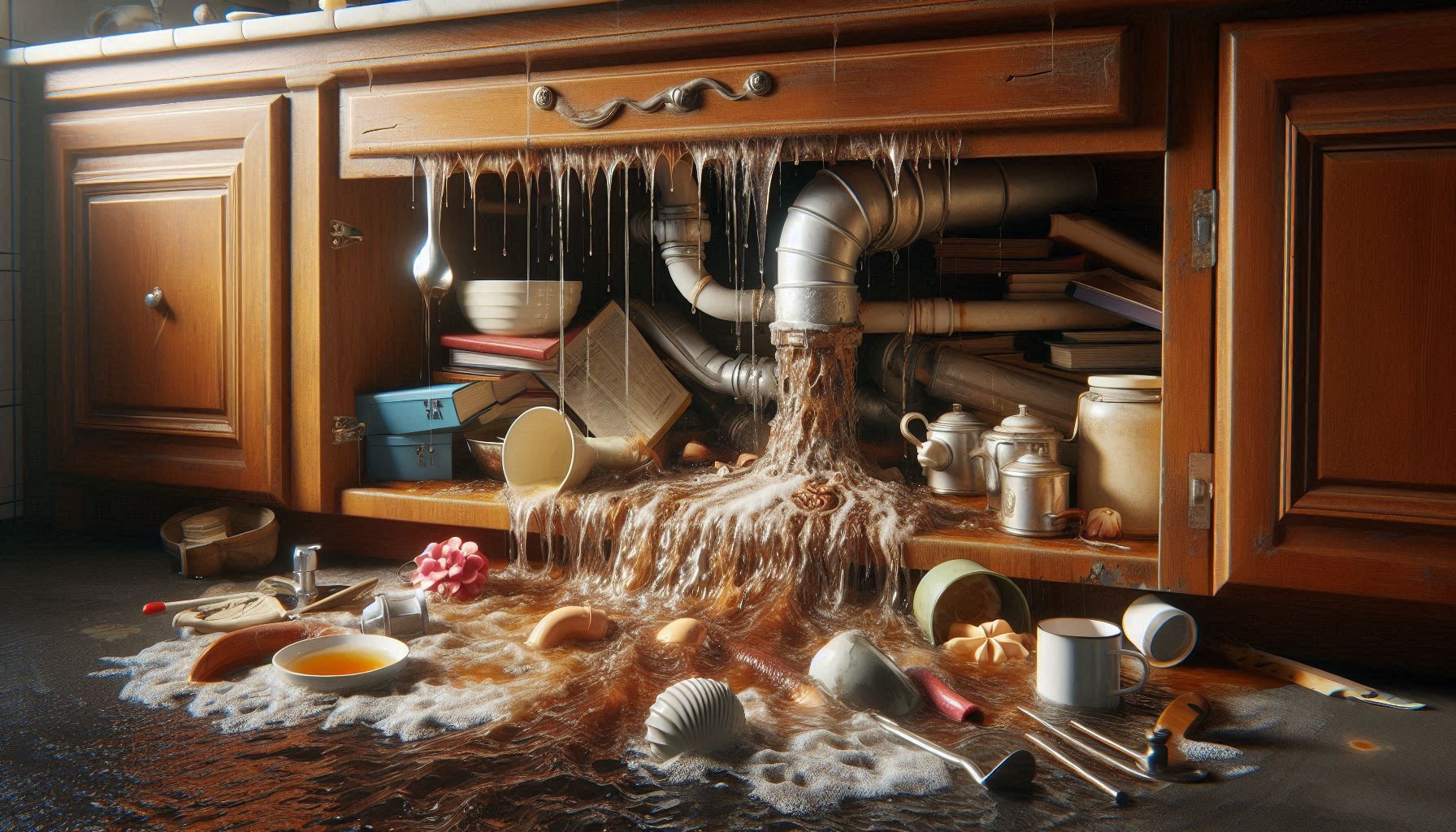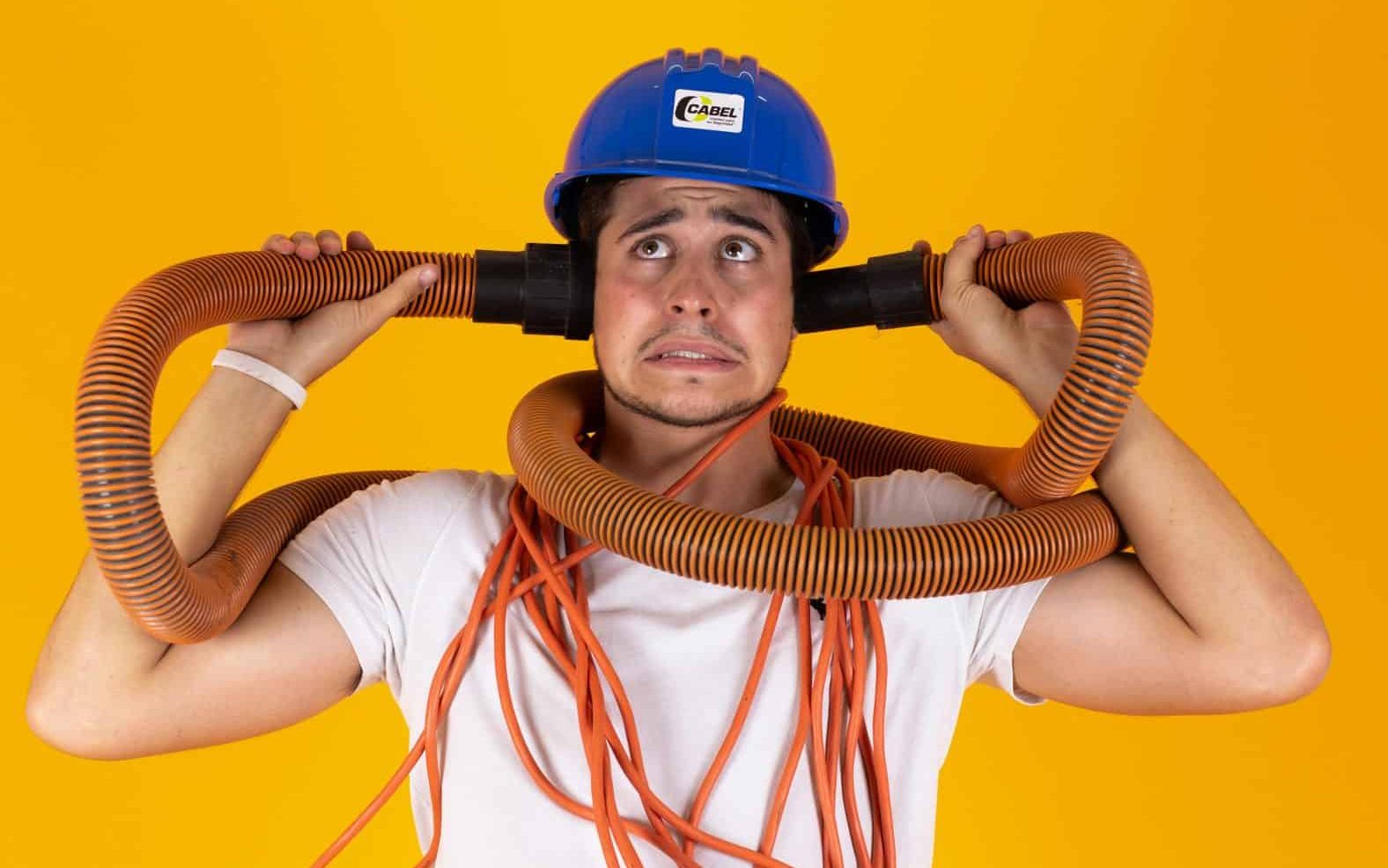Winter in Tennessee can bring some beautiful, snowy days, but it can also lead to…
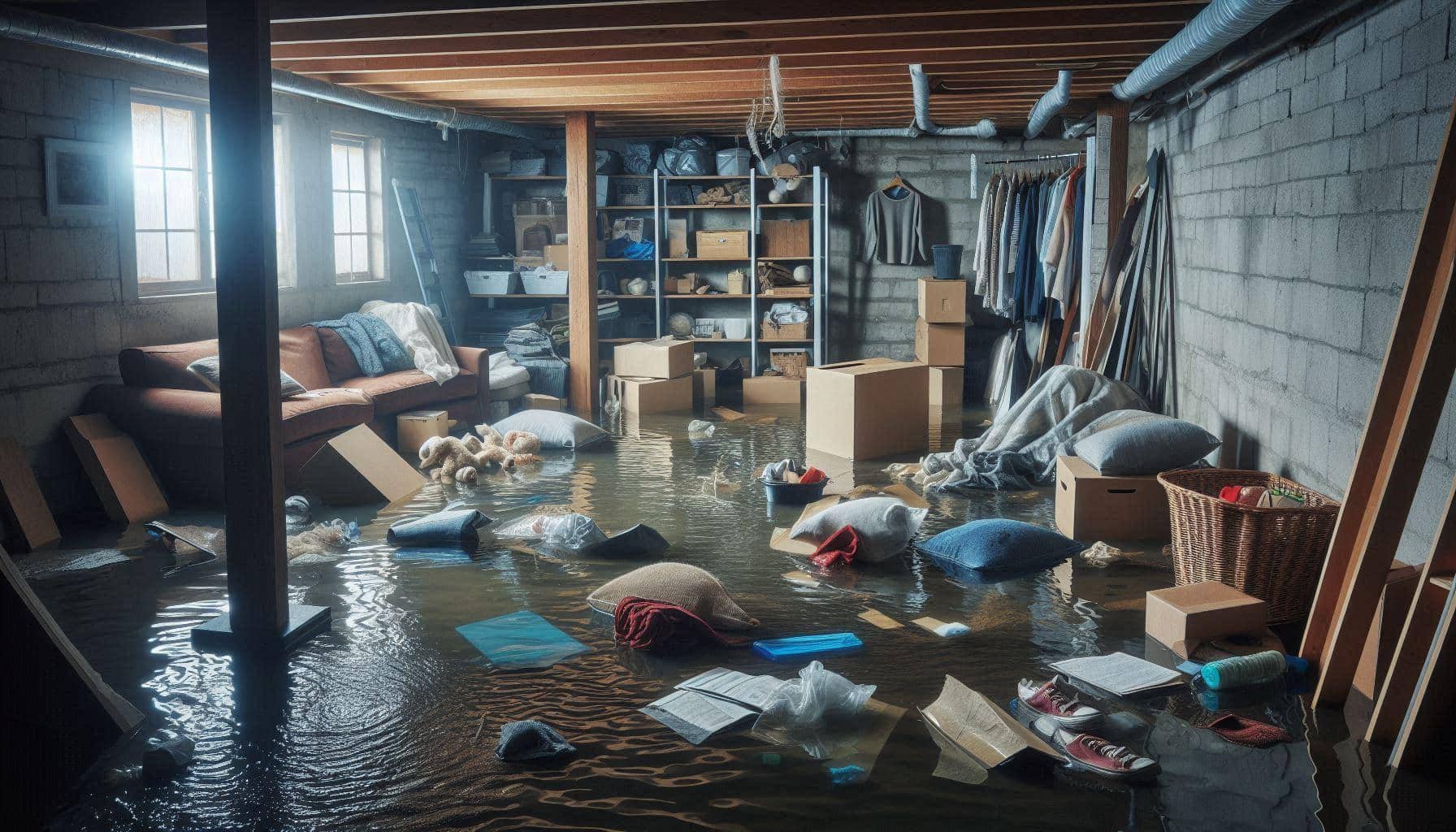
Is Your Home at Risk of Flooding? Stop the Flow of Expenses with Our Pump Guide!
Living in Chattanooga means understanding the value of a reliable plumbing system. We’ve all heard stories of neighbors losing cherished belongings and expensive appliances due to flooding. Recent floods were a stark reminder of how swiftly calm weather can turn into a soggy disaster. It’s crucial to have safeguards in place, and that’s where Patriot Services can assist! We specialize in installing and maintaining various pump systems—like Lift Station Pumps, Sump Pumps, Sewage Ejector Pumps, and Sewage Grinder Pumps—to ensure your home remains safe and dry in Chattanooga and the surrounding areas of Tennessee.
Whether you’re dealing with a flood or seeking expert tips, we’ll explain the basics of each pump type so you can choose what’s best for your home’s drainage needs.
Do I Need a Sump Pump?
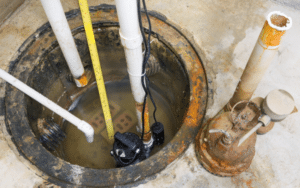 Does your basement flood after heavy storms? Or does it always feel damp? A sump pump could be the answer to your problems. Besides that tell-tale musty smell, basement leaks can harm your foundation and cause indoor air quality issues if you don’t act fast.
Does your basement flood after heavy storms? Or does it always feel damp? A sump pump could be the answer to your problems. Besides that tell-tale musty smell, basement leaks can harm your foundation and cause indoor air quality issues if you don’t act fast.
Concerned about mold? Learn about three key signs and the most common symptoms of mold exposure. Additionally, regular professional drain cleaning can help prevent water backup issues that might contribute to basement flooding. To help you maintain a dry and healthy home, we’re currently offering $50 off our repair services, including sump pump installations and repairs.
How do sump pumps work?
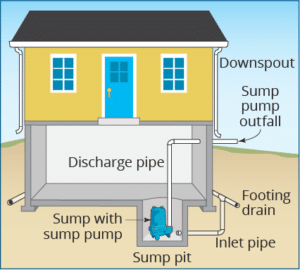 Sump pumps collect the excess water in your home into a ditch or “sump pit” installed on your basement floor. Once the water reaches a certain level, the sump pump automatically disposes of the water by transferring it out of your home into a local sewer drain.
Sump pumps collect the excess water in your home into a ditch or “sump pit” installed on your basement floor. Once the water reaches a certain level, the sump pump automatically disposes of the water by transferring it out of your home into a local sewer drain.
A sump pump’s job is to move groundwater away from the house’s foundation. Given Florida’s propensity for sudden heavy rainfall, sump pumps are essential in flood-prone areas. However, sump pumps are available in a few different types and models;
Pedestal Sump Pump: This pump is favorable for smaller pits without enough room for a submersible pump. The motor is mounted high on a shaft above the sump basin, making it easier to maintain and repair. However, the motor is not waterproof, so be sure it stays dry.
Submersible Sump pump: These pumps sit below the water level inside the sump basin. They are quieter and less obtrusive, making them safer if children are in the house. They also operate more efficiently and last longer than pedestal pumps, saving you money in the long run.
Effluent Pumps: Sometimes confused with sump pumps, but they serve a different purpose. They remove wastewater from laundry, bathroom sinks, and showers rather than just groundwater. These pumps are usually installed in homes with effluent basins or tanks.
Backup Solutions
While having a sump pump is excellent during storms, power outages can render your primary pump useless, putting your home at risk of flooding. That’s why having a backup plan is crucial.
Battery-Powered Backup Sump Pumps: Electric backup sump pumps are designed to function when the primary pump or power fails. These pumps run on 3-5 years of battery power, ensuring your basement stays dry even during power outages. They can be added to most existing sump pump systems without significant modifications. Many models also come with alarms to alert you when the backup pump is running or the battery needs charging.
Water-Powered Backup Sump Pumps: Water-generated backup options use your home’s municipal water pressure to remove water from the sump pit. They don’t rely on electricity or batteries, making them an excellent alternative. However, these pumps can use a significant amount of water, which could increase your water bill.
For complete peace of mind during power outages, consider a whole-home generator installation. This ensures all your critical systems, including sump pumps, continue to function during emergencies. As a token of our appreciation for those who’ve served, we offer a 10% discount on all our services, including generator installations, to veterans.
Dealing with Sewage Issues? Consider a Sewage Ejector Pump!
What is the difference between a sump pump and a sewage ejector pump?
Sewage ejector pumps are crucial for homes where bathroom, laundry, or other plumbing fixtures are located below the main sewer line. These pumps collect wastewater in a basin and then pump it up to the level of the main sewer line, preventing backups and ensuring proper drainage.
For homes with septic systems, it’s crucial to understand why septic pumping is so important. Regular maintenance of your septic system can prevent costly repairs and protect your property from sewage backups.
Don’t forget, our $50 off repair services applies to sewage pump repairs and maintenance as well!
How to Check If Your Home is Below the Main Sewer Line?
Check Your Home’s Elevation:
Begin by comparing the elevation of your home to the street level where the main sewer line is located. Homes with basements or lower levels can often be at a lower elevation than the street sewer line.
Inspect Your Plumbing Fixtures:
Look at the location of your plumbing fixtures, such as sinks, toilets, and showers. If these fixtures are in a basement or lower level, they might be below the main sewer line, requiring a pump to move wastewater upward.
Consult Property Plans:
Review your property’s blueprints or plans, which usually show the plumbing layout and elevations. Your local city planning office might provide these documents if you need them.
Professional Assessment:
Contact a professional plumber. Our plumbers offer on-site evaluations to determine the relative elevation of your home and its plumbing fixtures compared to the main sewer line.
Test Water Flow:
Observe how quickly water drains from your lower-level fixtures. Slow drainage could suggest that gravity alone isn’t efficiently moving the wastewater, indicating that your home’s plumbing is below the main sewer line.
Do I Need a Sewage Ejector Pump
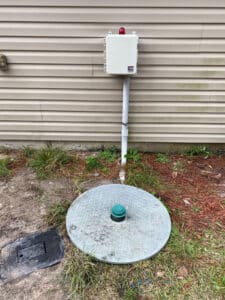 A sewage ejector pump can handle household wastewater from toilets, sinks, showers, and laundry facilities. It is the best choice for moving high volumes of raw sewage short distances or to a septic tank, typically up to 20 feet vertically and 100 feet horizontally, and it often uses less power. However, a sewage grinder pump is the right choice if you must pump to higher elevations and longer distances, especially with smaller-diameter pipes.
A sewage ejector pump can handle household wastewater from toilets, sinks, showers, and laundry facilities. It is the best choice for moving high volumes of raw sewage short distances or to a septic tank, typically up to 20 feet vertically and 100 feet horizontally, and it often uses less power. However, a sewage grinder pump is the right choice if you must pump to higher elevations and longer distances, especially with smaller-diameter pipes.
What is a sewage grinder pump?
Sewage grinder pumps or “Grinder pumps” are a specific type of sewage pump designed to handle lower volumes —between 35 and 70 gallons per minute— but can move waste over much longer distances, sometimes several thousand feet. Grinder pumps are great for pushing waste through pressurized sewer mains.
Important Note: A grinder pump is not recommended if your home is connected to a septic tank. These pumps break down waste particles so finely that solids can’t separate from liquids, which is essential to how septic systems work to treat wastewater.
Already have a grinder pump?
Grinder pumps require routine maintenance to ensure consistent function. We recommend scheduling professional inspections and servicing for your grinder pump at least once a year or as specified in your pump’s maintenance guidelines.
Heavy Duty Problem? A Lift Station Pump Could be the Solution
Consider a lift station pump if you’re looking for something more robust. A lift or pump station is an underground pit commonly called a “wet well.” It connects to the underground sewer network and features specialized pumps, electronics, water-level controls, and a monitoring system. These stations are crucial assets in managing sewer networks.
These pumps are engineered to manage larger volumes and heavier solids than sewage ejector pumps. Lift station pumps are primarily employed in municipal, industrial, and large commercial settings. They can effectively pump wastewater vertically from 30 to 100 feet and horizontally from 500 to 2,000 feet, with advanced systems capable of even greater distances.
Because a lift station can be significantly more complex than a sump or sewage ejector pump, the topography of the station’s placement area must be considered. Regular maintenance is essential to diagnose problems early and prevent disasters and costly repairs.
Why Regular Maintenance Matters for Pump Systems
Keeping your pump systems in good shape is crucial for several reasons. Here’s why regular maintenance matters:
Prevent Costly Repairs
Regular maintenance helps to identify and fix minor issues before they escalate into costly problems. This can save you substantial money in repairs and replacements down the line.
Improve Efficiency
A well-maintained pump system runs more efficiently. It uses less energy, which can lower your utility bills. Plus, efficient pumps do their job better, keeping your home dry and safe.
Extend Lifespan
Regular check-ups and timely fixes can extend the lifespan of your pump system. This means you won’t have to replace it as often, saving time and money.
Avoid Emergencies
No one wants to deal with a flood or sewage backup. Regular maintenance can prevent these emergencies by ensuring your pump system is always in good working order.
Ensure Health and Safety
Standing water and sewage backups can pose serious health risks. Regular maintenance helps avoid these hazards, keeping your home a safe and healthy place to live.
Common Signs Your Pump System Needs Maintenance
- Slow Drainage: If water takes longer than usual to drain, it could indicate a problem with your pump system.
- Unpleasant Odors: Foul smells can indicate wastewater is not pumping out efficiently.
- Frequent Cycling: If your pump turns on and off more frequently than usual, it might need help to keep up.
- High Energy Bills: A pump system working too hard will consume more energy.
- Visible Leaks: Any sign of leakage indicates something is wrong.
- Unusual Noises or Alarm Activation: Strange sounds or alarms going off is a warning that your pump system needs immediate attention.
Simple Sump Pit Test
To catch potential issues before they become emergencies, try conducting a pour test on your sump pit. Fill a five-gallon bucket with water and pour it around the sump pump basin. The pump should activate when the water reaches a certain level. If it doesn’t, it’s time to give us a call.
Already consulted another professional? Get a second opinion from us to ensure you’re making the best choice for your drainage needs.
Expert Help When You Need It
If you need pump installation and maintenance or additional services, our expert technicians at Patriot Services are here to help you select the right pump and related components for your home’s drainage needs. We handle installations and maintenance with minimal disruption to you and your household. Beyond pumps, we provide expert HVAC installation, maintenance, repair, indoor air quality, and ductwork services. With our commitment to quality and customer satisfaction, you can trust us to deliver the highest-quality workmanship and customer care.
Are you dealing with a flood or looking for an alternative choice? Schedule an appointment or call our expert team at Patriot Services in Chattanooga today! Don’t forget to ask about our current promotions, including our $50 off repair services and 10% discount for veterans, when you call.

